Dom visits the Dinaric Alps in the Primorje region of Croatia with Artemis Hunting in search of magnificent mouflon rams
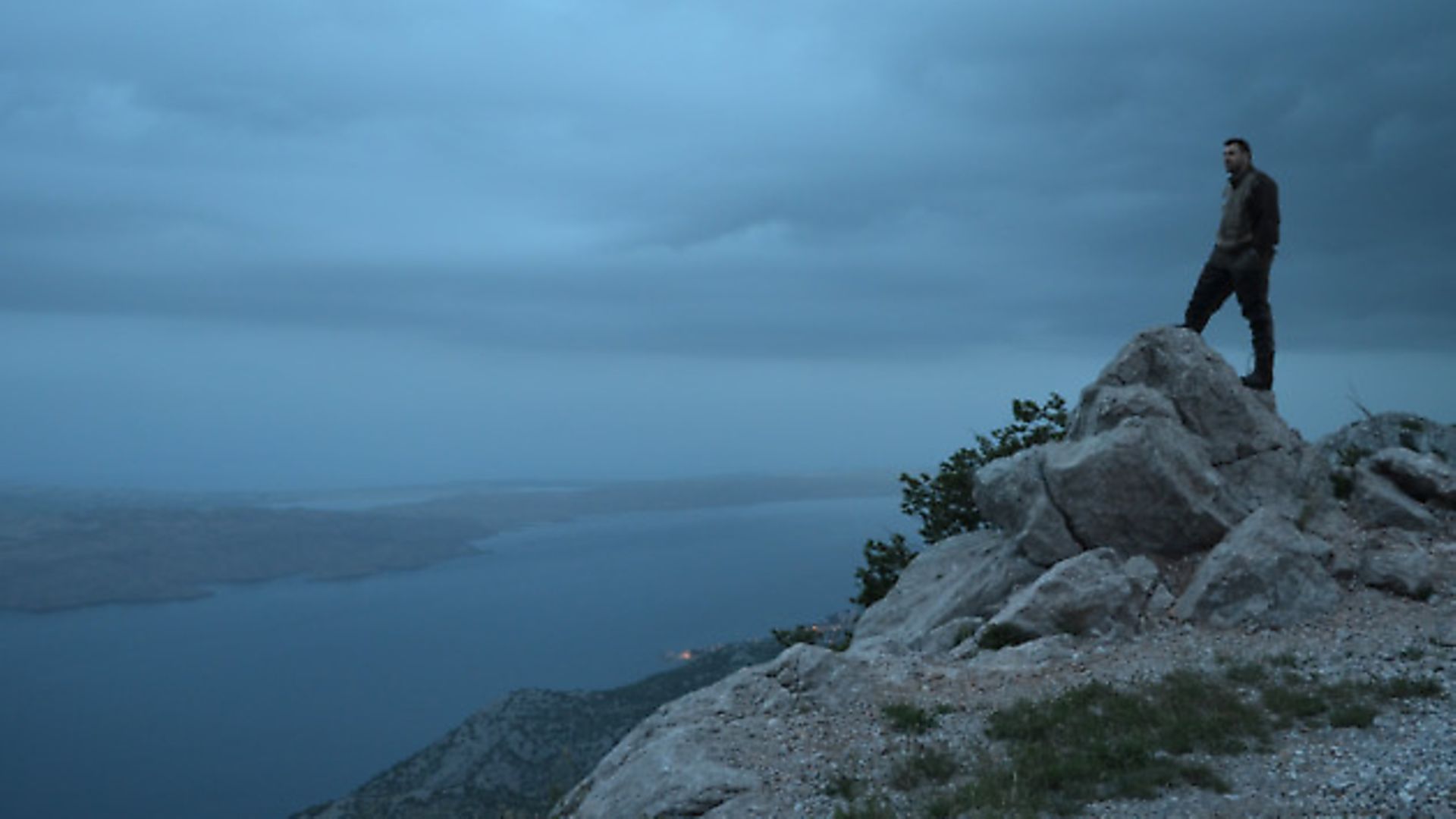 credit: Archant
credit: Archant
Croatia. This gem of a country has recovered incredibly well from the Balkan conflict in the 1990s and now thrives as a tourist destination as Europeans flock to the stunning Adriatic coast. But it is also gaining a growing reputation among sportsmen as a destination capable of offering an incredibly diverse array of game and habitat.
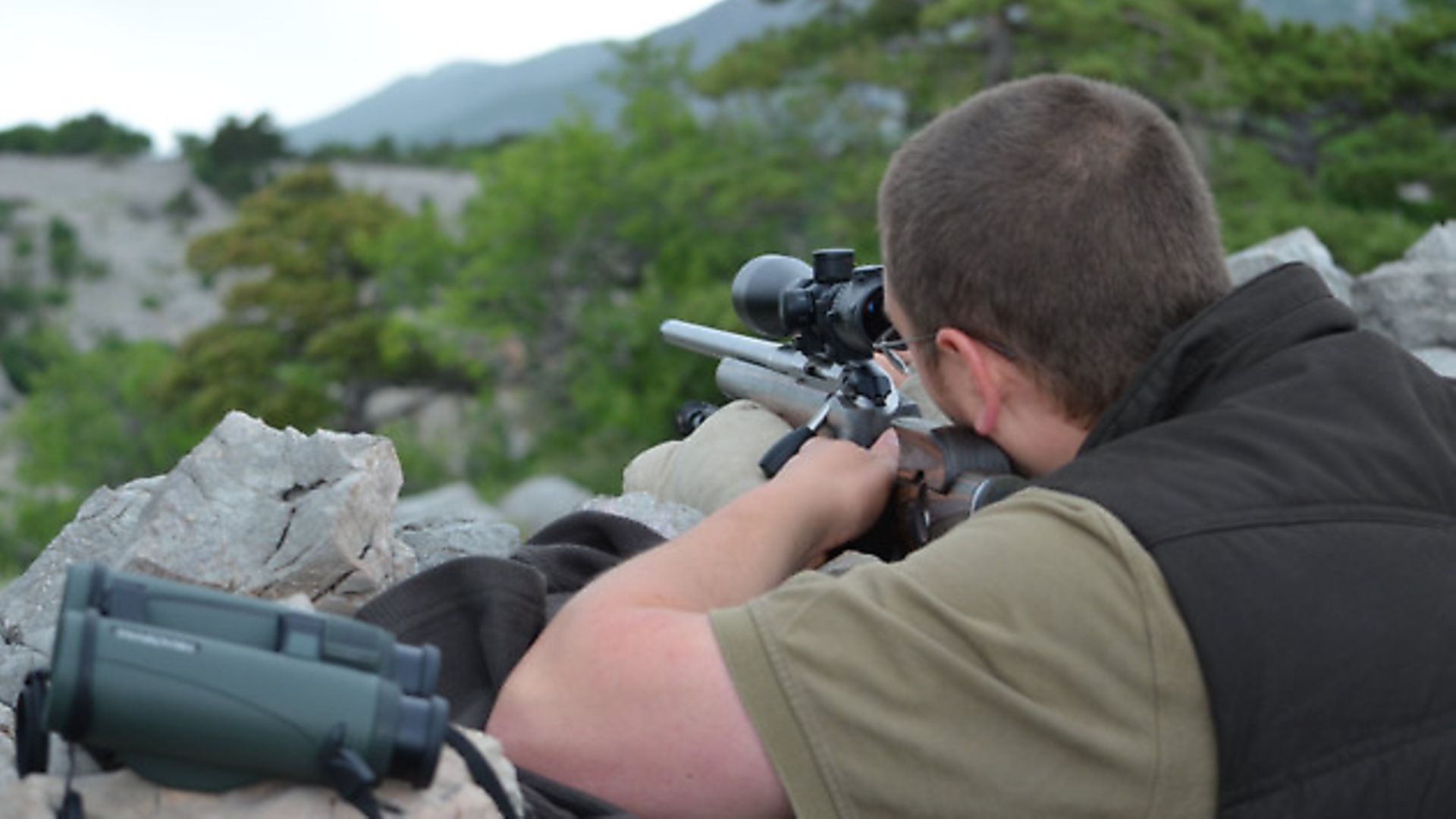 credit: Archant
credit: Archant
One of its premier hunts is the pursuit of mouflon in the dramatic limestone mountains of the Dinaric Alps. These wild sheep thrive in the crags and karst (rocky limestone landscape) and offer a truly memorable and physically challenging hunt. And it is the chance to sample this wild and savage landscape that has drawn us to Primorje.
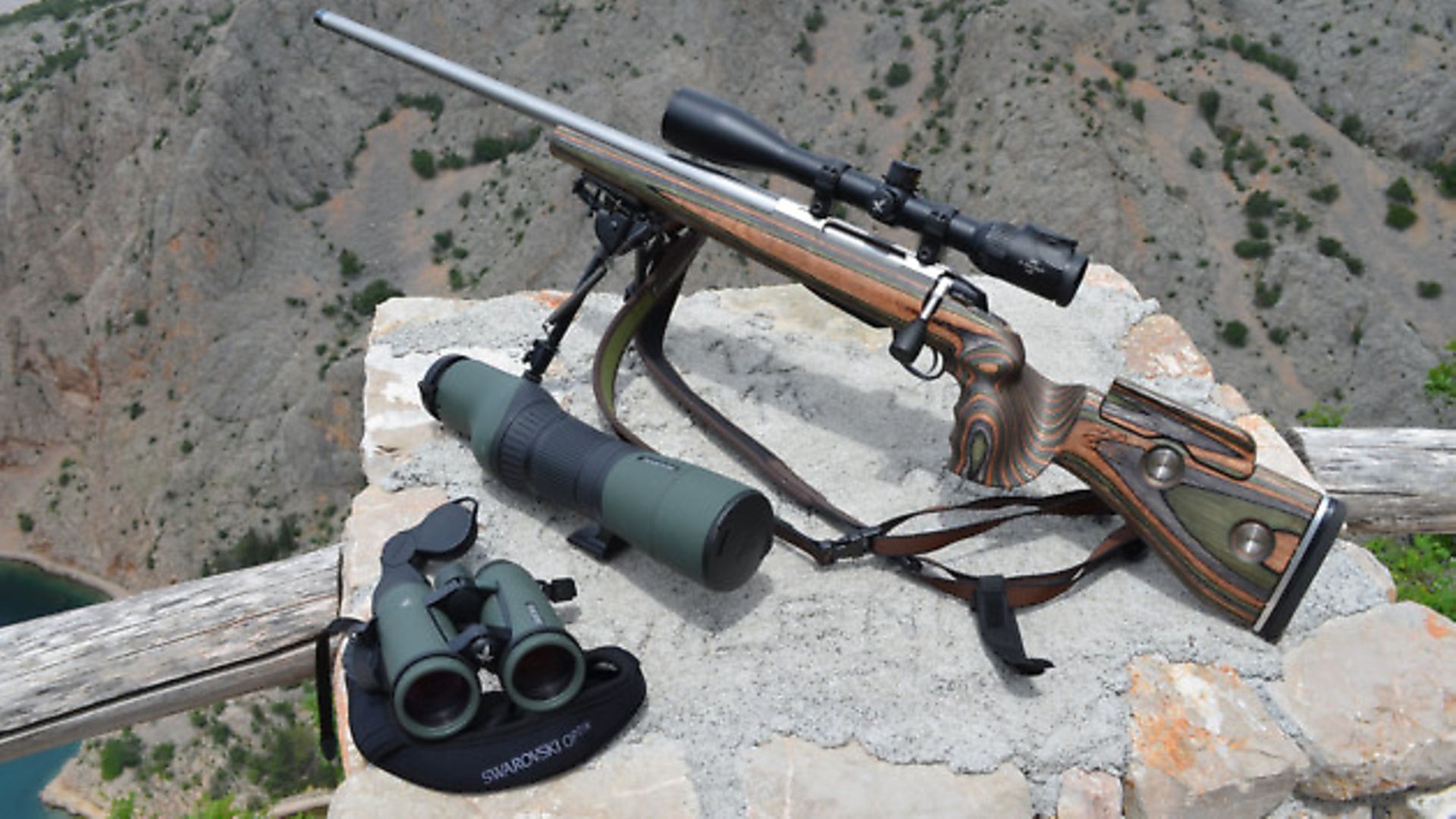 credit: Archant
credit: Archant
Our day starts in darkness after a scant few hours of sleep. I am glad I packed my hunting gear the night before because I feel a bit zonked as I chug Red Bulls in the car and realise that forgetting something crucial would not go down well.
 credit: Archant
credit: Archant
My host, Tomo Svetic, is at the wheel of his Nissan Patrol, navigating the deserted backroads. As well as running Artemis Hunting (see grey box on p24), Tomo is an avid hunter himself. But for him, the thrill of getting a client a result is almost as good as pulling the trigger himself. “It’s a lot of work and preparation to get a successful hunt,” he says. “You spend a lot of time talking to the client to make sure you know exactly what they want and what their expectations are. But the key is the native guides. Without them observing the animals and spending a lot of time at the hunting ground, your chances are much reduced.”
 credit: Archant
credit: Archant
Tomo pulls in and we get out to be greeted by a simply breathtaking vista as the first grey light of day – the wolf’s dawn – lifts the night and reveals the craggy coast and the savage peaks that will provide the terrain for our stalking today. The Adriatic is glass smooth in the distance and the air is still and cool. Any last vestige of fatigue is washed away on a tide of expectation.
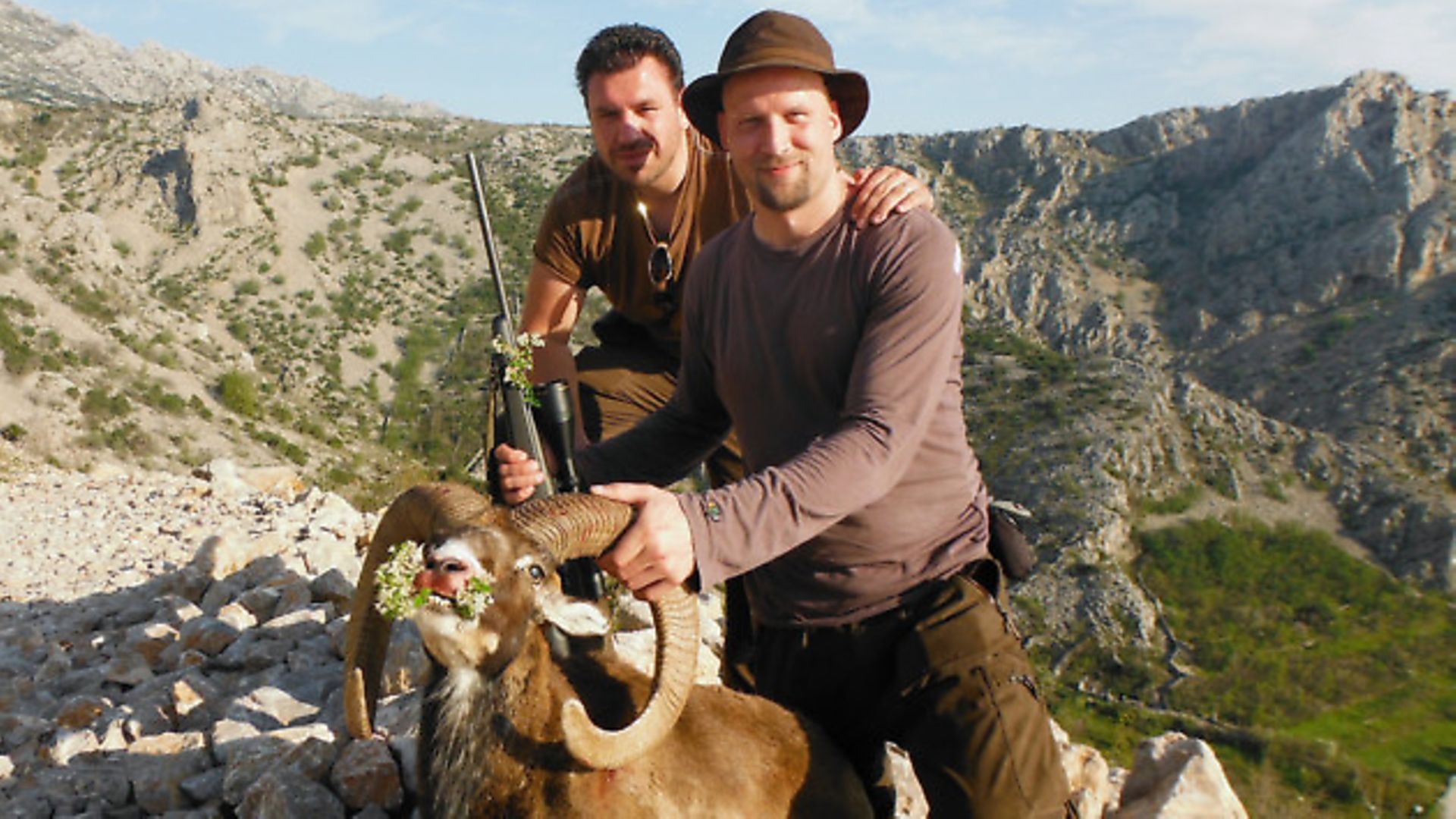 credit: Archant
credit: Archant
We meet our guides, Davor Dundovic and Mate Droga, in the shadow of the mountains near the village of Stinica. And over thick, bitter-sweet Turkish coffee and home-made charcuterie they talk Tomo through the plan of attack.
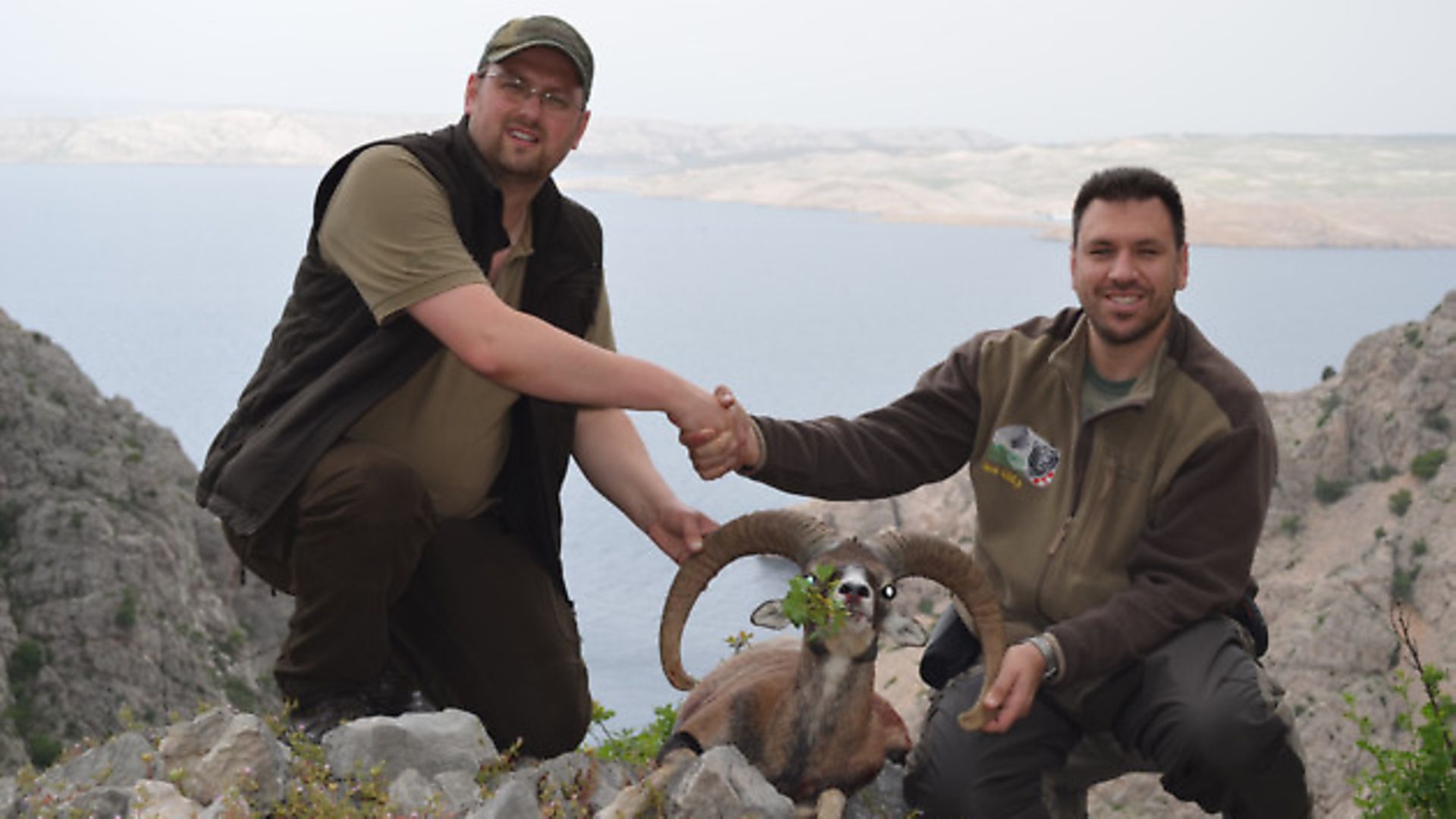 credit: Archant
credit: Archant
A chamois steps onto the mountaintop behind us, suddenly silhouetted against the breaking day. I choose to take it as a good omen. We are, in truth, a bit late in the year for prime mouflon hunting conditions. As the weather gets warmer, the big rams will separate from the herds and seek shelter from the heat during the day. This usually reduces hunting to early morning and late evening. But we are lucky. The wind has shifted to the south, bringing with it breezy, cloudy and damp conditions and extending the potential hunting opportunities. The downside is that rain could diminish visibility and the wind could affect accuracy on long-range shots.
 credit: Archant
credit: Archant
First up, as with most forms of hunting, is observation. And more observation. And more… We drive round to numerous vantage points and the guides use binoculars to scan for any sign of animals. If they spot something, out comes a cushion and a spotting scope and they take a closer look.
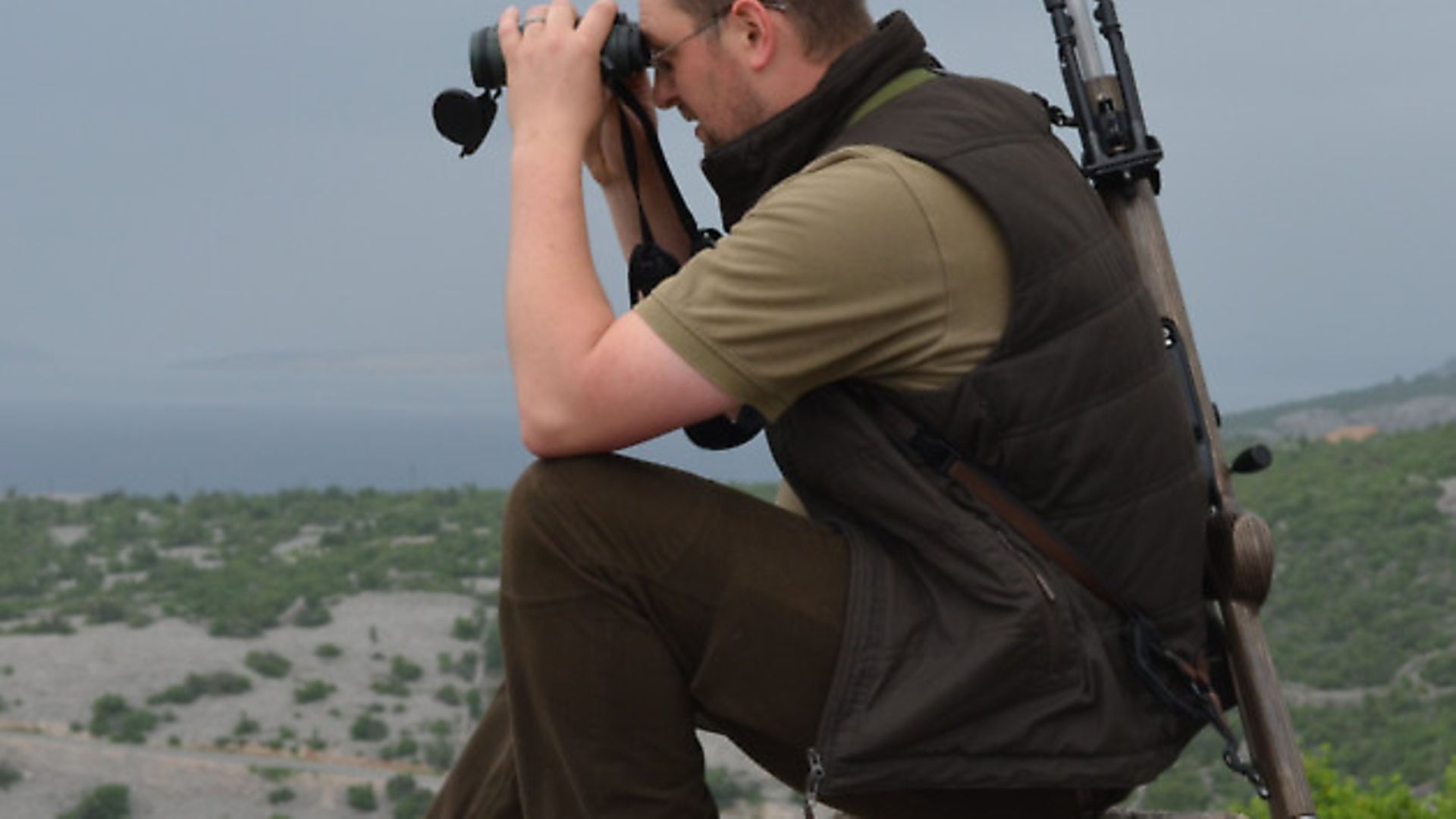 credit: Archant
credit: Archant
The spotting scopes are crucial for trophy assessment at range as well as for checking the health and development of individual animals. If you have never used one, there is a definite knack to getting it right, but once you have mastered it (and I definitely haven’t!) it becomes an indispensible part of your kit bag. These guys won’t hunt without them.
 credit: Archant
credit: Archant
My first taste of the rocky terrain is a bit of a shock to the system. Often in the high ground of England I have flopped down for a rest after a tough climb, the springy turf and soft vegetation providing a natural mattress on which to recuperate. Here, that is impossible. Every rock is razor sharp, the whole place utterly uncompromising. Sit and you’ll tear your trousers; put your hand down and there is a chance you will cut the skin.
Boots get a fearful hammering and the local guides can get through several pairs per year. Trousers, they say, can last as little as a couple of hunts. It is as brutal as it is beautiful.
“Wild sheep hunters from around the world like this challenge,” explains Tomo. “For them it should be tough. It should be demanding. For them, lowland hunting for mouflon would not be the right environment.”
We shift positions, parking close to the ocean, and walk to a vantage point that affords a commanding view over a steep face the other side of a deep valley. Even with the naked eye I can see there is a large group of animals on view, and I cross my fingers that there is a suitable ram amongst them.
There is. Two, in fact. Both are what Tomo refers to as ‘ashtrays’ – this is where the curl of the horn is too narrow to allow the rams to attain gold medal heads, though both look impressive enough to my novice eye. However, as with all management, the guides want to ensure that the animals are as healthy and have the best genetic blueprint as possibleBoth of the rams are lying down. One half covering the other: no shot. We will have to wait. Tomo scans the bank and takes some ranging information: it doesn’t fill me with confidence. The animals are just under 500 yards away. Gulp.
The good news is that we are so far away, and so well shielded, that the mouflon are oblivious to our presence.
It is my first opportunity to study the animals. The mouflon, Ovis aries orientalis, is thought to be one of two progenitors of all domestic sheep. There are several sub species around the world but the European mouflon has thrived across diverse territories, from lowland forest to these harsh peaks. The distinctive curled horns of the mature rams look spectacular and in short summer coat, their tan colouration with black edging, white belly and saddle patches gives them a striking appearance.
I can see youngsters and ewes on their hind legs plucking leaves from the scrubby trees as the rest of the herd lies and ruminates. The longer I wait for my shot, the more nervous I become and the more my heartbeat sets the crosshair flickering.
After what seems like an age, a third ram appears and Tomo tells me it is a suitable beast to take, so I switch aim, wait until he pauses and squeeze off a shot. It seems to take an age for a bullet strike to echo back and it certainly doesn’t sound like a hit. But nor can I see a bullet splash from the rocks behind. The guides see a flicker of reaction but are uncertain if the shot has hit its mark. Mouflon rams are tough and are renowned for showing little in the way of reaction on occasion. There is only one way to find out for certain and that’s the old fashioned way.
We set out to climb the path from the coast road to the area where the mouflon were spotted. Even with the southerly breeze it is getting hot and the climb is hard and slow.
I was a bit nervous about taking what is quite a heavy rifle on this hunt, but Tomo said to bring the most accurate rifle I had. So I swapped my traditional sling for a Niggeloh backpack type sling (about £50 from Northampton Gun). With the sling swivels mounted on the side of the stock, the gun lies flat on my back and the weight is shared evenly between my shoulders. I also have both hands free to help keep me balanced and stable when tackling the really treacherous climbs.
I had been worried about not being fit enough but the locals claim that you concentrate so hard on your footing that you don’t notice the steepness of the climbs. It’s true up to a point, because at times every footfall is an exercise in caution and control. You don’t wish to start a mini rock slide. You don’t want to slip on to the razor-sharp rocks. You don’t want to make any noise for fear of spooking nearby animals.
Thick leather or Kevlar boots with a high ankle and high quality rubber rand are the order of the day, as you don’t want to be worrying about turning an ankle up here, that’s for sure. Extraction by air-ambulance is not the ending I have in mind!
After a long hike and a careful search for blood, the guides are satisfied that the shot was a miss. It’s a big disappointment but at the same time I am relieved that there is not an injured ram to be followed up. Sometimes, the guides tell us, the only way you can find them is when the vultures start to circle.
So we are back to square one – but the guides Davor and Mate think they know where we might intercept the group at the other side of the valley. And fortunately for me they are right. Within 30 minutes we have contact with the animals again, Mate’s sharp eyes picking up a glimmer of tan hide and movement in the distance.
The group is on the move, though, and is unlikely to settle for a while after the disturbance. We select a vantage point that allows us a good shooting position as the group crosses some scrubby ground. Davor spots a likely candidate – a young ram whose horns, like the others we saw earlier, show signs of curling in, limiting his growth potential.
There isn’t long to wait for the shot this time – Tomo ranges the group at a whisker under 300 yards, I simply select the green spot on the scope’s ballistic turret and as the ram pauses, momentarily broadside, I squeeze off a shot.
This time I am certain from the moment the rifle barks. I re-acquire the animal through the scope just in time to see him buckle to a shoulder strike and hear the thwack of the bullet’s impact echo back across the rocks. The ram staggers a few paces and disappears from view in some scrubby bushes.
Tomo has watched the drama through the binoculars and is grinning broadly. “Perfect shot! He went straight down. Congratulations on your first mouflon!” He offers his hand and Mate gives me a thump on the back, nodding appreciatively at the rifle. He has a soft spot for fast, flat-shooting calibres and is rather taken with the Ackley.
After gathering my composure I realise that even carcass extraction presents serious issues up here. The animals can be in some extremely hard to reach places and the ability of the guides to accurately mark the shot site is crucial.
Locating the beast is one thing. Dragging a heavy animal out across terrain I can barely walk on is a feat I can only marvel at. Thank goodness Davor and Mate are more capable than me, but as Tomo explains, you literally can be risking your life: a misplaced step can be catastrophic.
Our hunt was not a trophy hunt. The animal we shot was young and part of the population management strategy. But if you want a truly world-class ram, Croatia can definitely deliver the goods. Tomo shows me photos of some stupendous beasts taken by other clients – although the selection of the right animal is always paramount. The guides know the mountains – and the mouflon – like the back of their hands and they know their job superbly. It is remarkable, also, to think that these animals are living wild and free in this landscape – these aren’t fat, fed lowland beasts but rather have mastered one of the most inhospitable terrains you can image.
After we have taken some snaps as a memory of the hunt and admired the colouring of the hide and the curl of the horn, the carcass is expertly prepared. Measurements of the horn are taken for the records. Samples of lung, liver and kidney are sent away for analysis to ensure the animal was healthy and the meat is expertly butchered for local consumption. The guys make all sorts of charcuterie as well as using the fresh meat and not a scrap will be wasted. Which is just the way I like it.
We finish our day with a chance to soak up some of the local history and culture and most importantly, the local cuisine. From the local sheep’s cheese and the air-dried ham to the incredible scampi and Adriatic squid, eating on the Croatian coast is highly recommended!
It also offers that all-important chance to relive the hunt with Tomo. To talk through what went right, what went wrong. Over a beer or two and a flagon of local wine I come to the conclusion that hunting mouflon in Croatia is an assault on your senses. From the balmy warmth of the sun and the heady aroma of wild herbs to the unyielding brutality of the rocks… It is like suddenly hunting in high definition and the scenery, with the glistening turquoise of the Adriatic winking like a jewel in the near distance, can leave you shaking your head in wonder as you pause for breath.
As hunting adventures go, this is right up there and I am already plotting and saving for a return visit. I remember what so many locals said to me the first time I visited the country: “First time in Croatia? It won’t be your last…”
By Dom Holtam
PRODUCT INFO
SCOPE – Z6i 5-30x50 WITH BALLISTIC TURRET
The main criteria for this shooting mission were big magnification and the ballistic turret. Because quite often the terrain dicates long shots, the ability to pull that target in close is crucial. The Z6i’s amazing six-times zoom range means that we can benefit from the wide-angle field of view at 5x, allowing for fast target acquisition, and zoom all the way in to a staggering 30x magnification. That’s enough pull to see every detail on your target – even at 500 yards or more.
Light transmission is less of an issue for this type of hunting as we weren’t operating in either the early dawn or late evening, but you want crystal clear images from edge to edge and the Z6i delivers.
The tiny illuminated dot and the crosshairs set in the second focal plane mean that you get ultra-accurate shot placement potential even at the big end of the magnification. There is also a side-wheel parallax adjustment on the scope for quick, accurate adjustment.
The ballistic turret is now well established: the turret comes with three coloured rings which, along with your initial zero point, means you can have four options for different ranges. This allows you to aim dead-on by rotating the turret to the appropriate mark. We decided that the best policy was to zero at 200 yards. Then we opted for the green ring at 300 yards, the yellow at 350 and the red at 400 yards.
Swarovski now offers its own ballistic calculator, available online or as an app for your smartphone – go to www.ballisticprograms.swarovskioptik.com – which we then confirmed on the range.
BINOCULAR – EL RANGE 10x42
We fell in love with these binoculars the first time we tried them in Austria. Available as an 8x42 or a 10x42, we opted for the higher magnification option here. They offer much of the lightweight and ergonomic benefits of the superb EL with the added benefit of a brilliantly effective laser rangefinder built in.
Not only are you getting a great binocular, you get fast, accurate data which is essential for long-range shooting. I find that hunting in a different environment or targetting a new species with which I was not familiar made me even more dependent on the rangefinder for data.
The EL Range is easy to use, even one-handed, and the optical performance (91% light transmission) means that there is no need for compromise, however long your hunting day may be and however poor the light. Using the rangefinder becomes second nature and adds a great deal of certainty to your hunting – it even improves estimation skills over time as you can cross-check your guess.
SPOTTING SCOPE – STX 25-60x65
The final piece of the jigsaw is the spotting scope. The ability to examine a ram in detai is crucial. If a client is after a specific trophy, the guides must be certain that the animal is right. Likewise, if you are on a management hunt – as we are – you don’t want an overzealous and overexcited hunter making a mistake and shooting a trophy worth several thousand Euros!
There is a broad range of spotting scopes on offer from Swarovski with a choice of objective lenses and a variety of magnification choices, plus the option of either straight or angled eyepieces.
We plumped for the modular STX model with the smaller 65mm objective lens for its more compact dimensions and lighter weight, as that counts in the mountains. The 25-60x eyepiece gave a might range of magnification but still offers a wide field of view.
The modular nature of the STX range makes it easier to transport and also allows you to mix and match eyepieces and objective lenses to suit your situation. Eye-relief Plus makes life easier for glasses wearers, while the HD optics give incredible contrast and image quality.
There are also some brilliant new digiscoping accessories that allow you to turn your spotting scope into a device for capturing amazing images or film footage via your camera – we will be using these in an upcoming feature and will post the results in the Sporting Shooter TV section of this website soon – keep an eye out.
There are lots of expert tips on how to get started at www.swarovskioptik.com
ARTEMIS HUNTING
Artemis Hunting offers tailor-made travel packages for hunters from around the globe. Founder and director Tomo Svetic is a highly experienced hunter who aims to provide trips that deliver not only great results but encapsulate the culture and cuisine of the destination.
Tomo organises the permits and paperwork and works with the local guides to ensure the hunt runs smoothly.
He has access to the very best hunting ground in Croatia and his network of contacts can cater for everything from the hunt itself and bespoke gunsmithing to quality accommodation and top local food.
Costs for hunts vary dramatically depending on what the client wants. A large medal-class trophy mouflon could run to several thousand Euros but management hunts can also be organised.
If you want to combine your trip with a family holiday or with other game, there are lots of possibilities and Tomo will recommend the best times to travel and can lay on species from boar to bear.
Contact Tomo and let him tailor a package to your needs and budget. Visit www.artemis-hunting.com or call 07795 084055 to find out more.